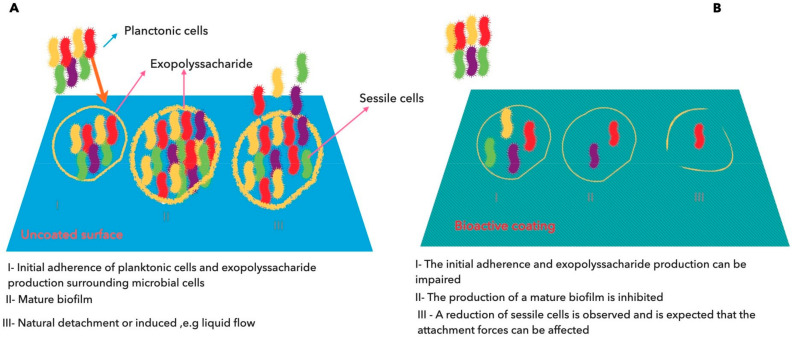Figure 2.
Inhibition of biofilm formation by nanostructured bioactive coating surfaces. (A) The uncoated surface allows the adherence of planktonic cells (cells in suspension) with the subsequent production of exopolysaccharides (or glycocalyx) (I) that enclose the sessile cells (adherent cells), forming a mature biofilm (II) and at a later stage can detach from the aggregate and initiate a new cycle of colonization of the same or new surfaces (III). (B) A bioactive coating allows the inhibition of the first stage of the biofilm formation: the bacterial adherence and the production of glycocalyx (I). Sessile cells are not able to multiplicate inside the aggregate and the layer of glycocalyx is thinner (II), resulting in a deficient mature biofilm that will collapses (III).

